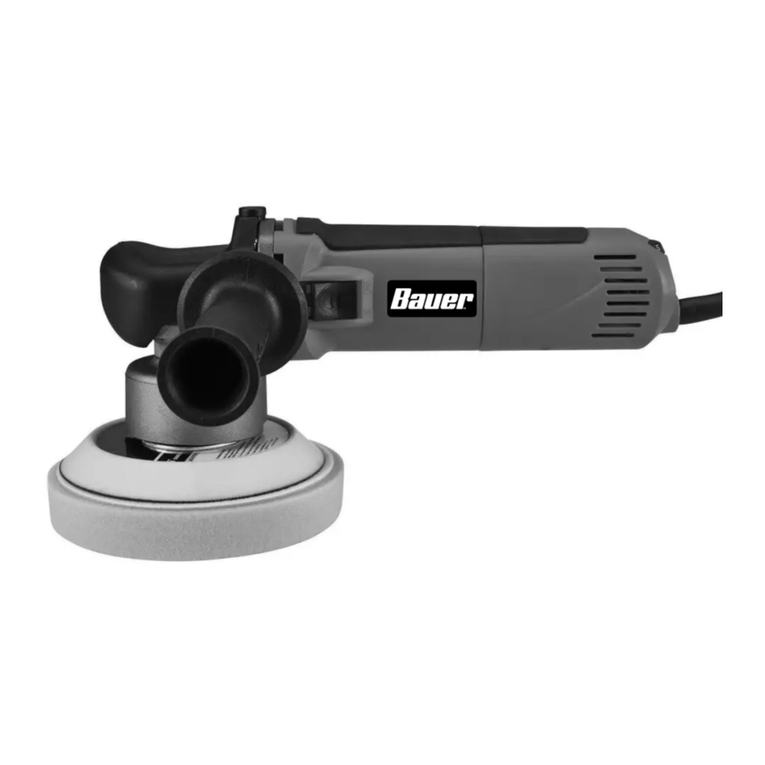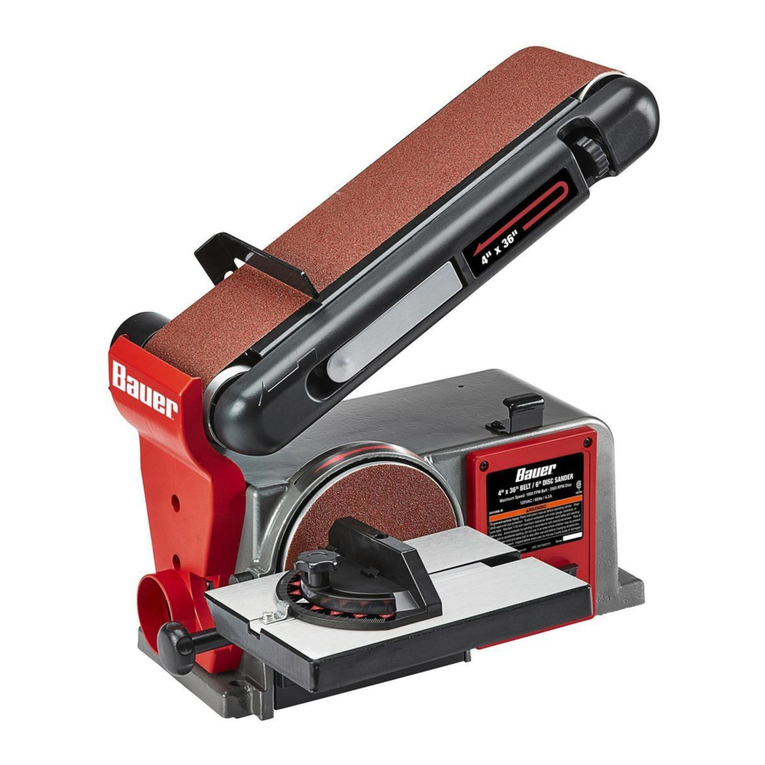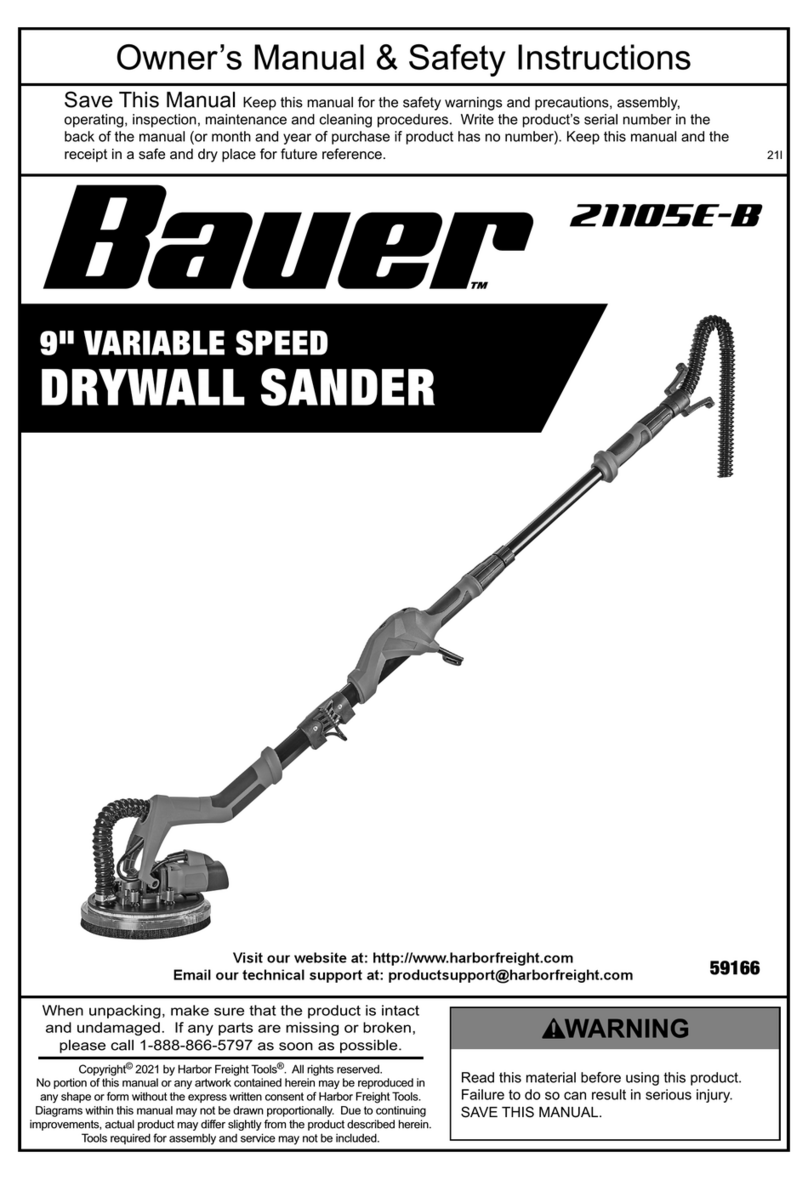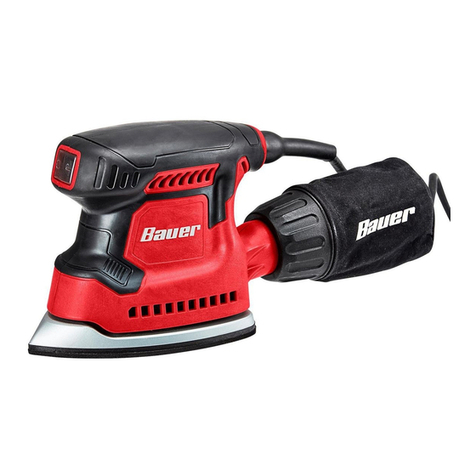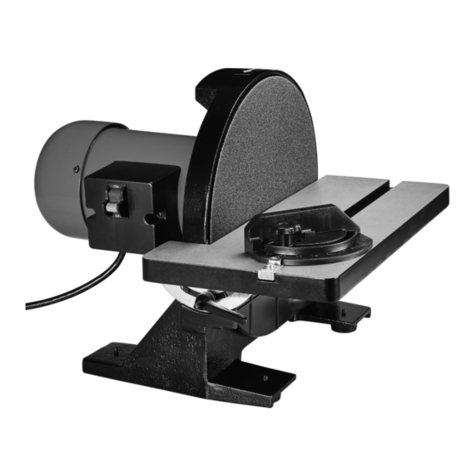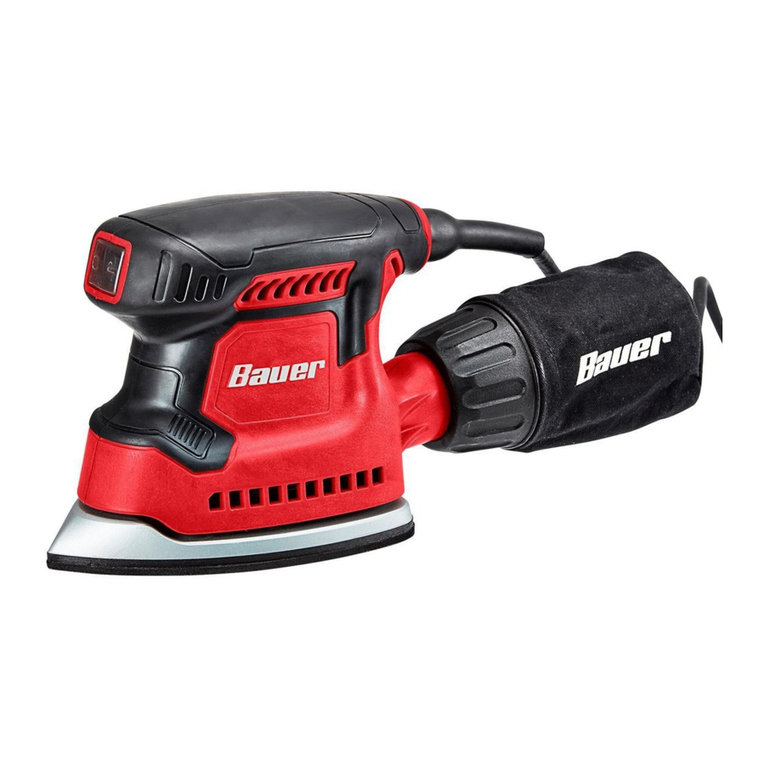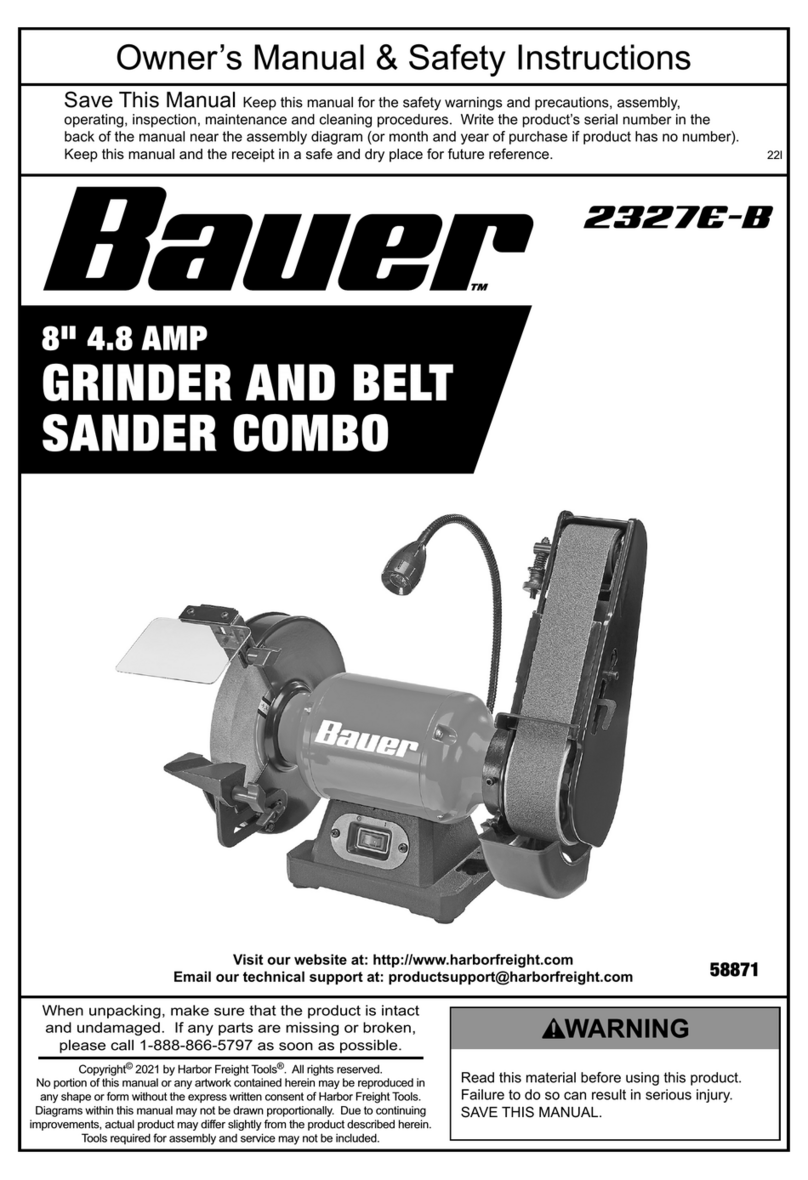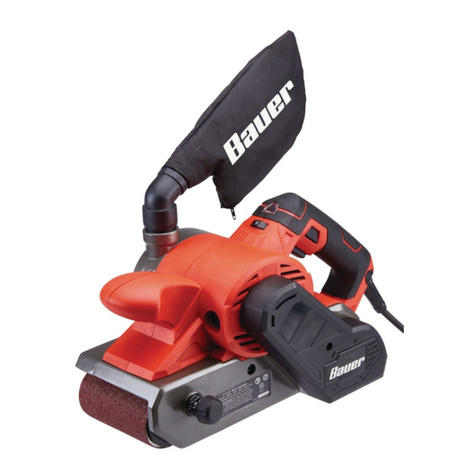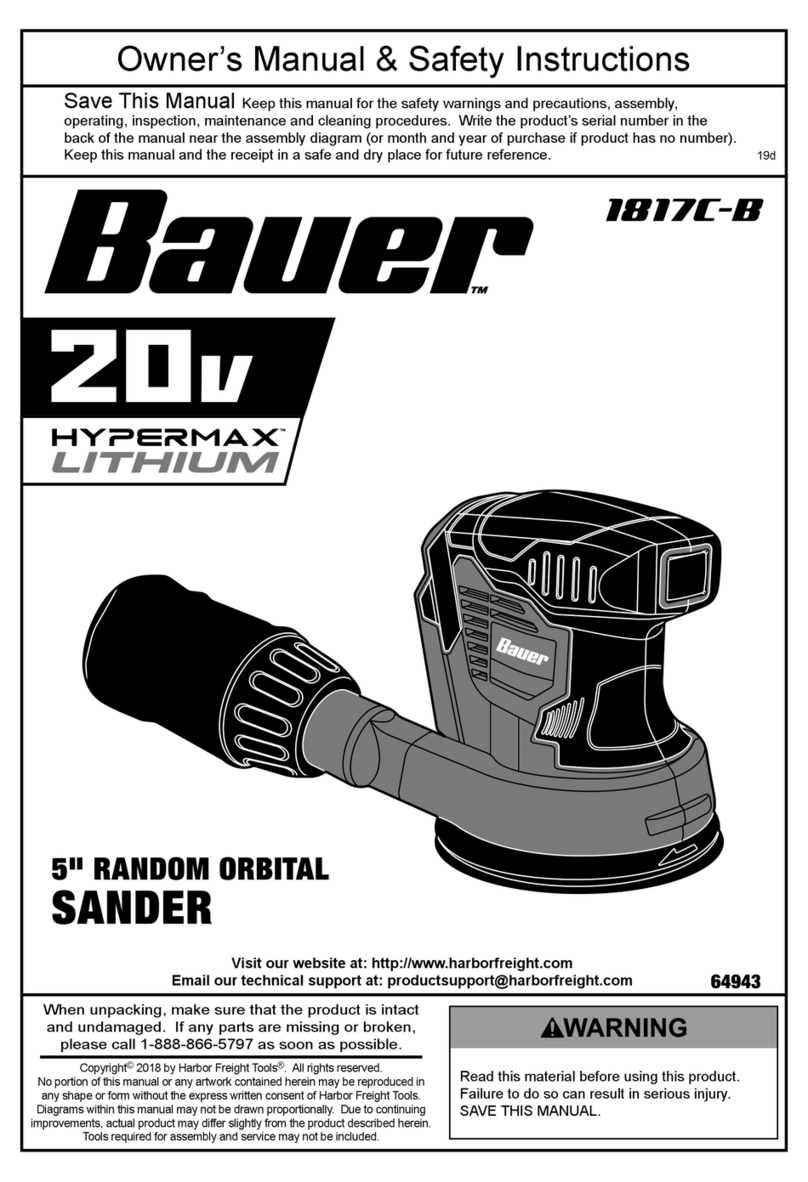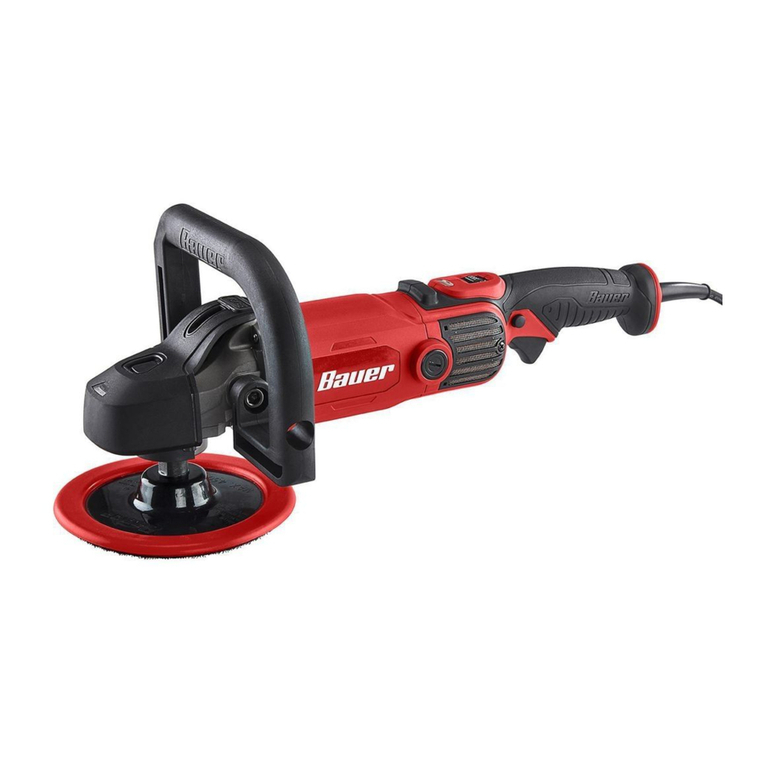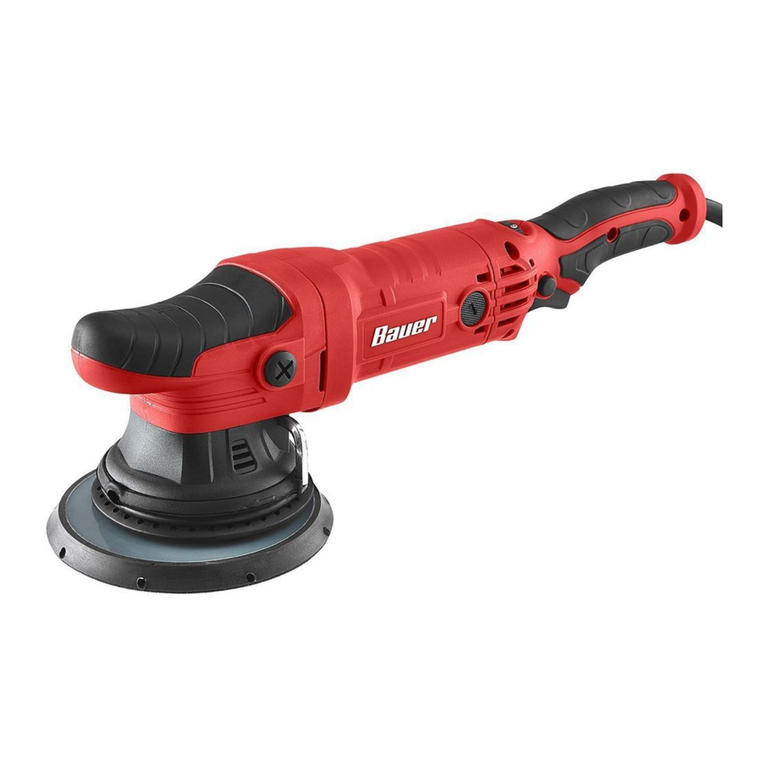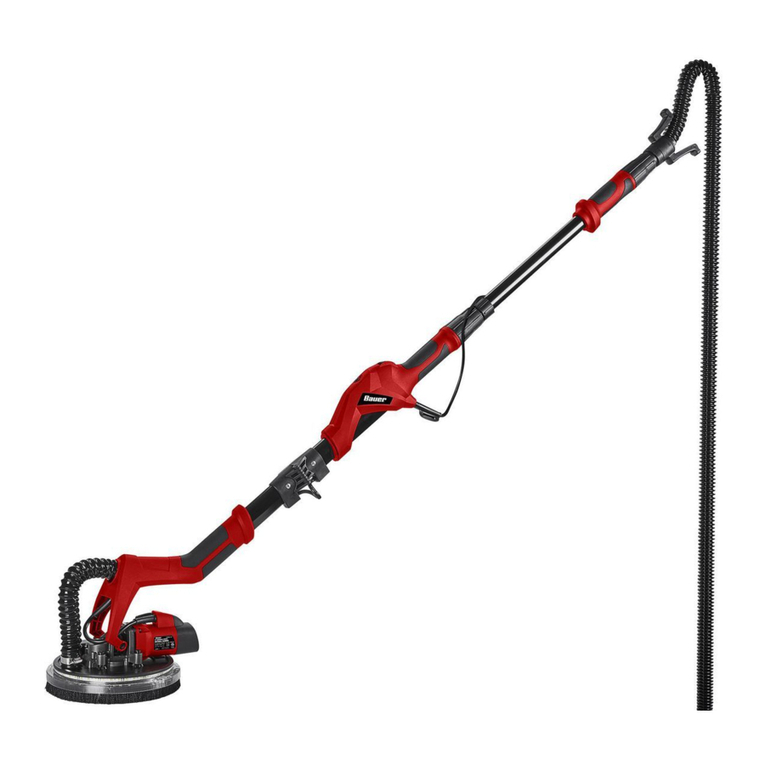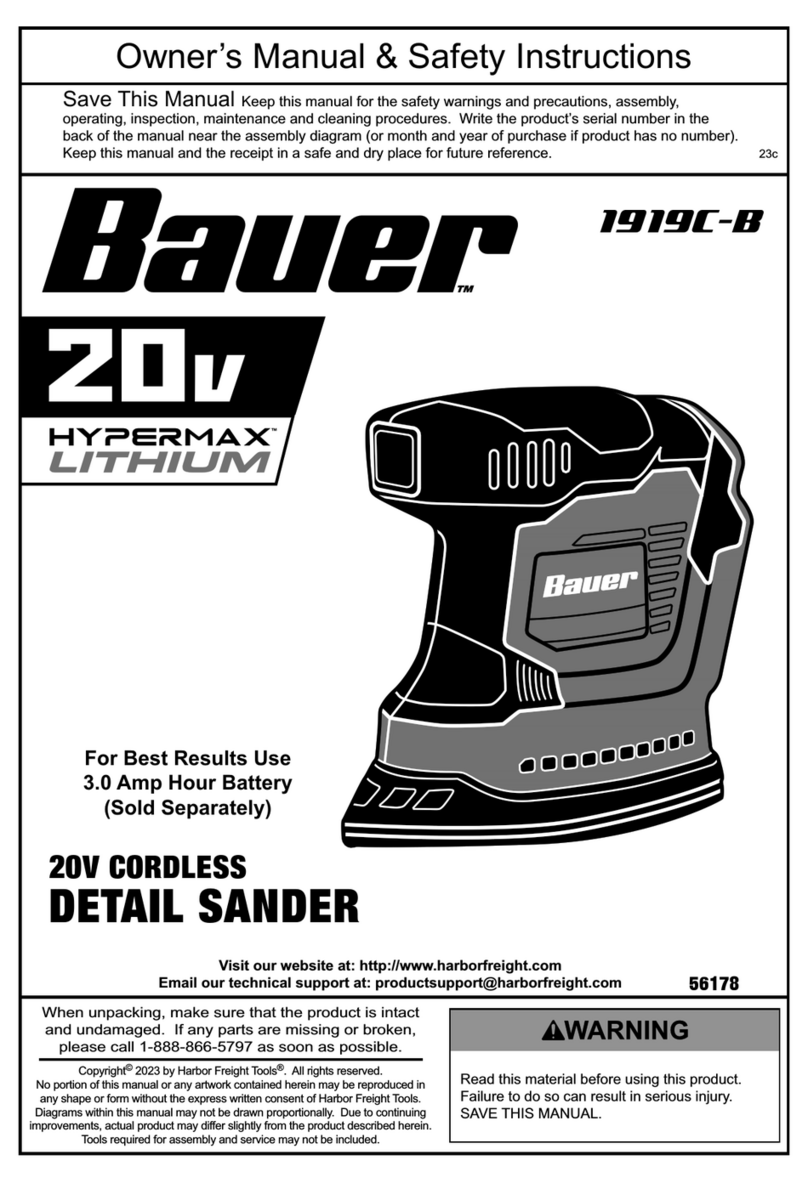
Page 3<&(%$*4.8"4,7%H'*#$"&8#I%/7*,#*%4,77%JKLLLKLMMKNOPO1Item 64146
?@<6AQRS6;@ACRED@CEA6E@ET6 ?6AFS
67*4$("4,7%?,2*$>
1. S&)*(%$&&7%/7'3#%5'#$%5,$4.%$.*%&'$7*$1%%
E*Y*(%5&9"2>%$.*%/7'3%"8%,8>%),>1%%
X&%8&$%'#*%,8>%,9,/$*(%/7'3#%)"$.%3(&'89*9%
/&)*(%$&&7#1 Unmodified plugs and matching
outlets will reduce risk of electric shock.
2. @Y&"9%+&9>%4&8$,4$%)"$.%3(&'89*9%#'(2,4*#%
#'4.%,#%/"/*#I%(,9",$&(#I%(,83*#%,89%
(*2("3*(,$&(#1% There is an increased risk of
electric shock if your body is grounded.
3. X&%8&$%*\/&#*%/&)*(%$&&7#%$&%(,"8%&(%)*$%
4&89"$"&8#1 Water entering a power tool
will increase the risk of electric shock.
4. X&%8&$%,+'#*%$.*%4&(91%%E*Y*(%'#*%$.*%4&(9%
2&(%4,((>"83I%/'77"83%&(%'8/7'33"83%$.*%
/&)*(%$&&71%%[**/%4&(9%,),>%2(&5%.*,$I%&"7I%
#.,(/%*93*#%&(%5&Y"83%/,($#1%%Damaged or
entangled cords increase the risk of electric shock.
5. U.*8%&/*(,$"83%,%/&)*(%$&&7%&'$9&&(#I%
'#*%,8%*\$*8#"&8%4&(9%#'"$,+7*%2&(%
&'$9&&(%'#*1 Use of a cord suitable for outdoor
use reduces the risk of electric shock.
6. C2%&/*(,$"83%,%/&)*(%$&&7%"8%,%9,5/%7&4,$"&8%
"#%'8,Y&"9,+7*I%'#*%,%V(&'89%<,'7$%T"(4'"$%
C8$*(('/$*(%]V<TC^%/(&$*4$*9%#'//7>1
Use of a GFCI reduces the risk of electric shock.
S*(#&8,7%?,2*$>
1. ?$,>%,7*($I%),$4.%).,$%>&'%,(*%9&"83%
,89%'#*%4&55&8%#*8#*%).*8%&/*(,$"83%
,%/&)*(%$&&71%%X&%8&$%'#*%,%/&)*(%
$&&7%)."7*%>&'%,(*%$"(*9%&(%'89*(%$.*%
"827'*84*%&2%9('3#I%,74&.&7%&(%5*9"4,$"&81
A moment of inattention while operating power
tools may result in serious personal injury.
2. F#*%/*(#&8,7%/(&$*4$"Y*%*H'"/5*8$1%%
@7),>#%)*,(%*>*%/(&$*4$"&81 Protective
equipment such as dust mask, non-skid safety
shoes, hard hat, or hearing protection used for
appropriate conditions will reduce personal injuries.
3. S(*Y*8$%'8"8$*8$"&8,7%#$,($"831%
68#'(*%$.*%A("33*(%"#%"8%$.*%&22K/&#"$"&8%+*2&(*%
4&88*4$"83%$&%/&)*(%#&'(4*I%/"4Z"83%'/%&(%
4,((>"83%$.*%$&&71
Carrying power tools with your finger on
the Trigger or energizing power tools that
have the Trigger on invites accidents.
4. X&%8&$%&Y*((*,4.1%%[**/%/(&/*(%2&&$"83%,89%
+,7,84*%,$%,77%$"5*#1 This enables better control
of the power tool in unexpected situations.
5. X(*##%/(&/*(7>1%%X&%8&$%)*,(%7&&#*%47&$."83%&(%
=*)*7(>1%%[**/%>&'(%.,"(I%47&$."83%,89%37&Y*#%
,),>%2(&5%5&Y"83%/,($#1 Loose clothes, jewelry
or long hair can be caught in moving parts.
6. C2%9*Y"4*#%,(*%/(&Y"9*9%2&(%$.*%4&88*4$"&8%&2%
9'#$%*\$(,4$"&8%,89%4&77*4$"&8%2,4"7"$"*#I%*8#'(*%
$.*#*%,(*%4&88*4$*9%,89%/(&/*(7>%'#*91 Use of
dust collection can reduce dust-related hazards.
7. R87>%'#*%#,2*$>%*H'"/5*8$%$.,$%.,#%+**8%
,//(&Y*9%+>%,8%,//(&/(",$*%#$,89,(9#%,3*84>1
Unapproved safety equipment may not provide
adequate protection. Eye protection must be
ANSI-approved and breathing protection
must be NIOSH-approved for the
specific hazards in the work area.
S&)*(%A&&7%F#*%,89%T,(*
1. X&%8&$%2&(4*%$.*%/&)*(%$&&71%%F#*%$.*%
4&((*4$%/&)*(%$&&7%2&(%>&'(%,//7"4,$"&81
The correct power tool will do the job better and
safer at the rate for which it was designed.
2. X&%8&$%'#*%$.*%/&)*(%$&&7%"2%$.*%A("33*(%%
9&*#%8&$%$'(8%"$%&8%,89%&221
Any power tool that cannot be controlled with the
Trigger is dangerous and must be repaired.
3. X"#4&88*4$%$.*%/7'3%2(&5%$.*%/&)*(%#&'(4*%
+*2&(*%5,Z"83%,8>%,9='#$5*8$#I%4.,83"83%
,44*##&("*#I%&(%#$&("83%/&)*(%$&&7#1
Such preventive safety measures reduce the
risk of starting the power tool accidentally.
4. ?$&(*%"97*%/&)*(%$&&7#%&'$%&2%$.*%(*,4.%&2%
4."79(*8%,89%9&%8&$%,77&)%/*(#&8#%'82,5"7",(%
)"$.%$.*%/&)*(%$&&7%&(%$.*#*%"8#$('4$"&8#%
$&%&/*(,$*%$.*%/&)*(%$&&71 Power tools are
dangerous in the hands of untrained users.
5. D,"8$,"8%/&)*(%$&&7#1%%T.*4Z%2&(%5"#,7"385*8$%
&(%+"89"83%&2%5&Y"83%/,($#I%+(*,Z,3*%&2%/,($#%
,89%,8>%&$.*(%4&89"$"&8%$.,$%5,>%,22*4$%$.*%
/&)*(%$&&7_#%&/*(,$"&81%%C2%9,5,3*9I%.,Y*%$.*%
/&)*(%$&&7%(*/,"(*9%+*2&(*%'#*1 Many accidents
are caused by poorly maintained power tools.
6. [**/%4'$$"83%$&&7#%#.,(/%,89%47*,81 Properly
maintained cutting tools with sharp cutting edges
are less likely to bind and are easier to control.
7. F#*%$.*%/&)*(%$&&7I%,44*##&("*#%,89%$&&7%+"$#%
*$41%"8%,44&(9,84*%)"$.%$.*#*%"8#$('4$"&8#I%
$,Z"83%"8$&%,44&'8$%$.*%)&(Z"83%4&89"$"&8#%
,89%$.*%)&(Z%$&%+*%/*(2&(5*91 Use of the
power tool for operations different from those
intended could result in a hazardous situation.
